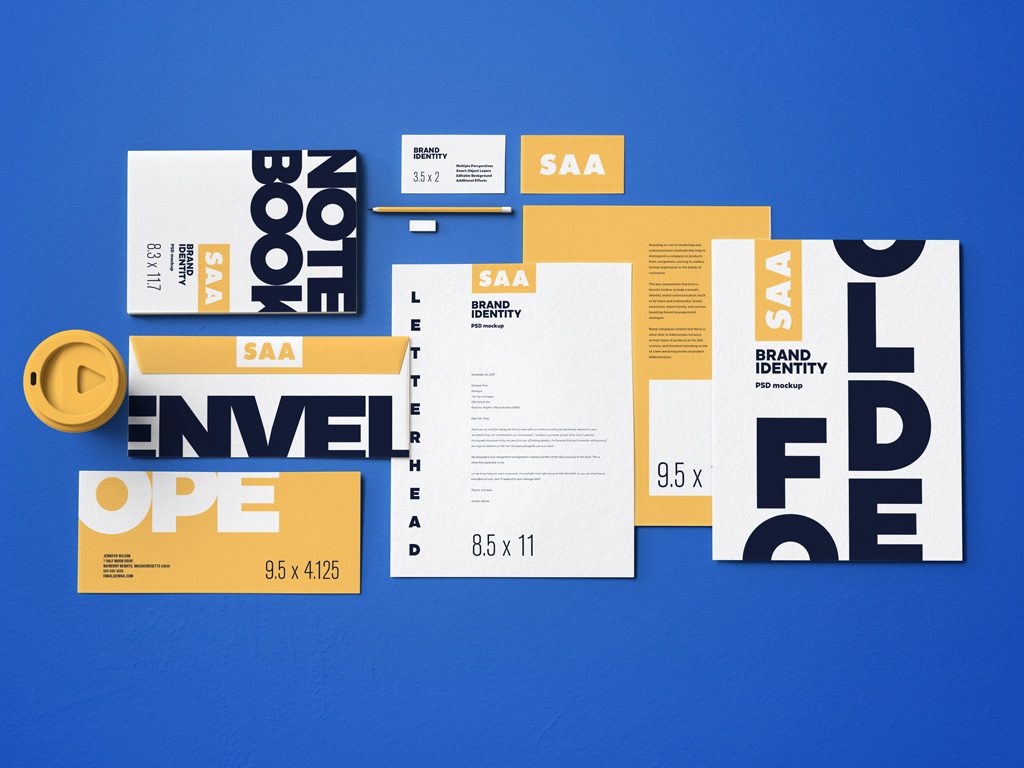Visuals communicate better than words.
This is why the visual identity of your brand plays a significant role to grab the attention of your audience and create a long-lasting impression on their minds.
Your visual identity comprises your logo, imagery, typography, colors, and creative designs that set you apart from others. Your visual identity is the representation of your brand.

Hence most companies make their identity apparent in their websites, products, blog articles, and ads. But when it comes to video, branding is often overlooked.
Video is one of the most compelling tools for creating meaningful engagement, which is why the popularity of video content is steadily increasing. 82% of content production is expected to be video by 2022, which makes it a very effective marketing tool for any business.
You may use the best video creator tool to make the most powerful video, but unless you attach your brand identity to it, your audience might not recognize it’s you.
Hence whatever may be the purpose of your video (branding, marketing, training, or general awareness) video branding is extremely important. A well-branded video can do wonders for your company’s brand awareness and employee morale. It’s important, however, that you match your video branding with the overall identity of your brand.
Finding your brand identity.

1. Define your audience.
Defining your audience is the most crucial step in branding, you won’t be able to appeal to your audience unless you have an understanding of their needs and wants. Hence it’s essential to analyze your audience before your brand to connect with them. You will need to determine the language, terms, and tone of communication that best fit your buyer personas.
2. Define your mission.
Once you invest some time digging into your audience, take some time for self-analyzation. What products or services do you offer your customers and clients? But finding the answer to ‘what’ only is not enough. You also need to think in terms of why and how you plan to make those offerings. Here you can take advantage of feedback and surveys.
3. Identify your brand personality.
When you have a good idea about your target audience as well as your brand’s mission, identify the brand personality that matches the position.
Creating your visual identity.

Your visual brand elements communicate to your audience who you are and what you stand for. Some of the key elements like brand color schemes, unique logo, and clear fonts play a significant role while branding your videos, all of them are discussed in detail below.
1. Brand Color.
Color is a great tool to create a distinct brand identity from your competitors. However, since colors elicit strong emotions, one should be careful enough to choose wisely.
A good color palette is clean and flexible, providing enough creative space for designers but not so much as to overwhelm them. It includes:
- 1 main color
- 2 primary colors
- 3 to 5 complimentary colors
- 2 accent colors
The choice of the colors should be based on the kind of story you want to tell about your brand.
Want to convey the message that your company is trustworthy and stable? Use a broad palette of blues. Want to highlight your commitment to sustainable development and environment conservation? Use earthy green and browns. And if your company is all about creativity, be sure to incorporate pinks and oranges which psychologically feel the most creative.
Pastel colors have worked out pretty well for most companies. These are a part of the pale family colors that have high luminance and low saturation in them. They can be created by adding luminance to any pure color on the color wheel.
Pastel colors are pleasing to the eyes and best for soft emotions like love, affection, romance, joy, calmness, peace, and satisfaction. These color palettes have been extensively used by home decors, interior designers, and baby products.
2. Logo.
The role of your logo is to convey what you do. It should have imagery that sticks into the minds of the people who see it. A logo can be a combination of your color palette, type, and design. It’s not compulsory to include your main color in the logo. Plenty of brands opt for black or white logos since they are easy to deal with and modify.
You can save your main color for CTAs and other design aspects on your website.
3. Typography.
Beyond what the words say, the scale, font, and arrangement of your text impact your visual identity. For instance, a funeral home that uses a playful, bright, or comic font will confuse potential customers who are grieving.
Typography can be tricky in a visual language. If you’re a novice, it’s best to keep it simple and limit the number of font families to 2-3.
Even the best-known brands like Facebook and Apple, tend to keep it simple!
4. Image guideline.
Images convey the vibe of your brand. Some brands use photography, while others use illustration or a combination of both.
But if your products are videos, stills from your videos may work best for you.
And while you’re calculating what’s best for your brand, it’s also important to identify clear guidelines about the types of images (and visual treatments) that aren’t appropriate.
The keys to a strong brand identity.

Simply designing the brand elements don’t make your brand effective.
Strong brand identity has to influence both your internal team and all other people who interact with it. As you plunge into the design process, make sure your brand identity is:
1. Distinct.
It stands out among competitors and catches people’s attention.
2. Memorable.
It makes a lasting impact. For instance, the logo of apple is so memorable that they don’t feel the need to include their name on their products.
3. Scalable and flexible.
It can grow and evolve with the brand.
4. Cohesive.
Each piece complements the brand identity.
5. Easy to apply.
It’s intuitive and clear for designers to use.
Keeping your brand consistent.
Consistency is the key strategy if you want to attract and retain loyal viewers. Using consistent brand imagery gives them a sense of authenticity. However, it’s becoming increasingly difficult to maintain that consistency in our evolving world of multi-channel marketing. A lack of consistent branding can present your business in an unprofessional light. It’s better to establish a clear, concise, and consistent brand identity across your channels and mediums that revolves around your brand style, substance, and story.
Keep the following tips in mind while creating your visual identity and witness a higher ROI for your marketing efforts!
Leave a Reply